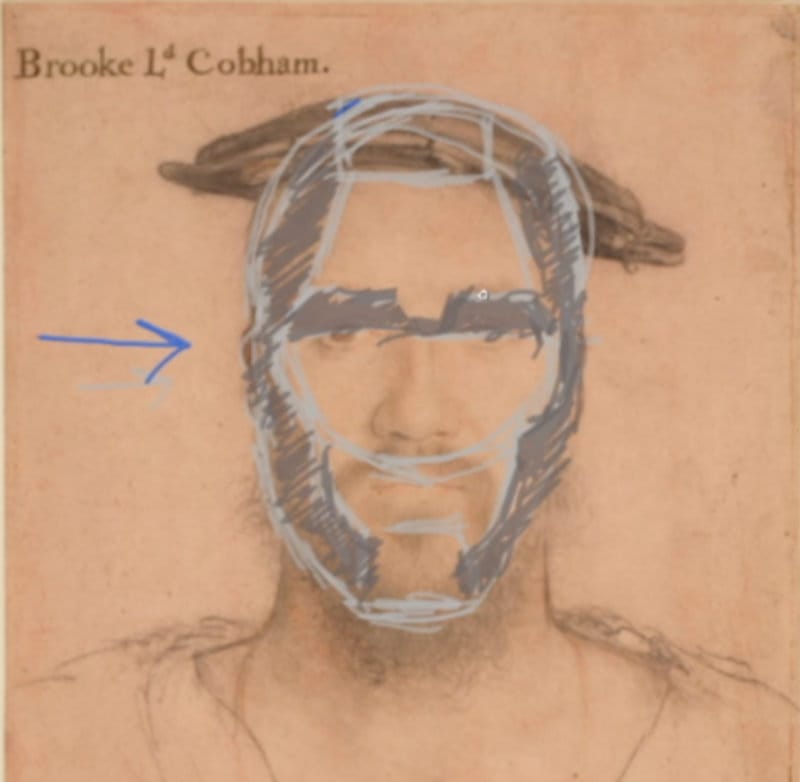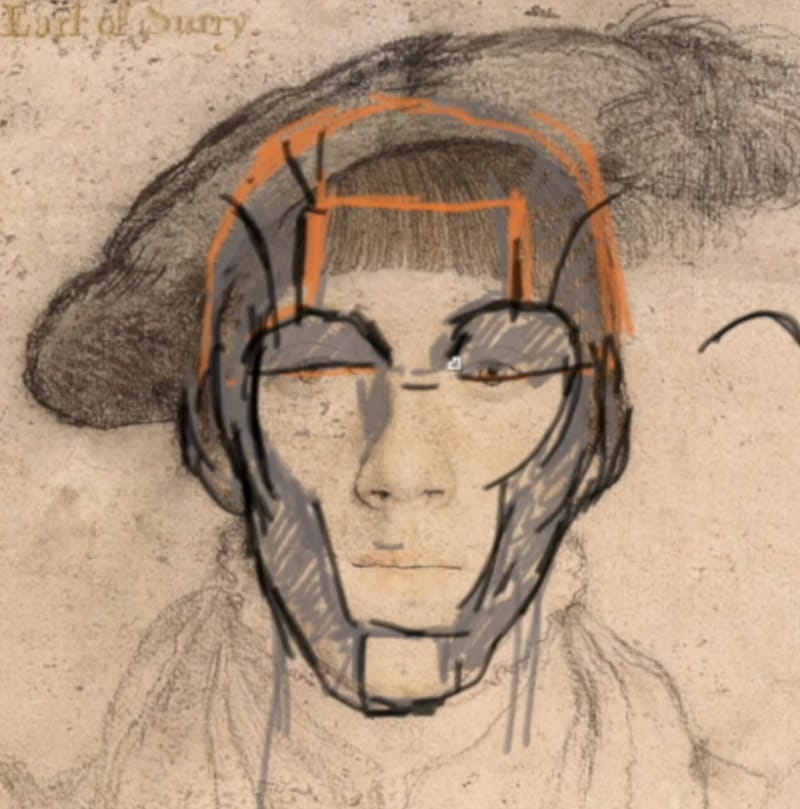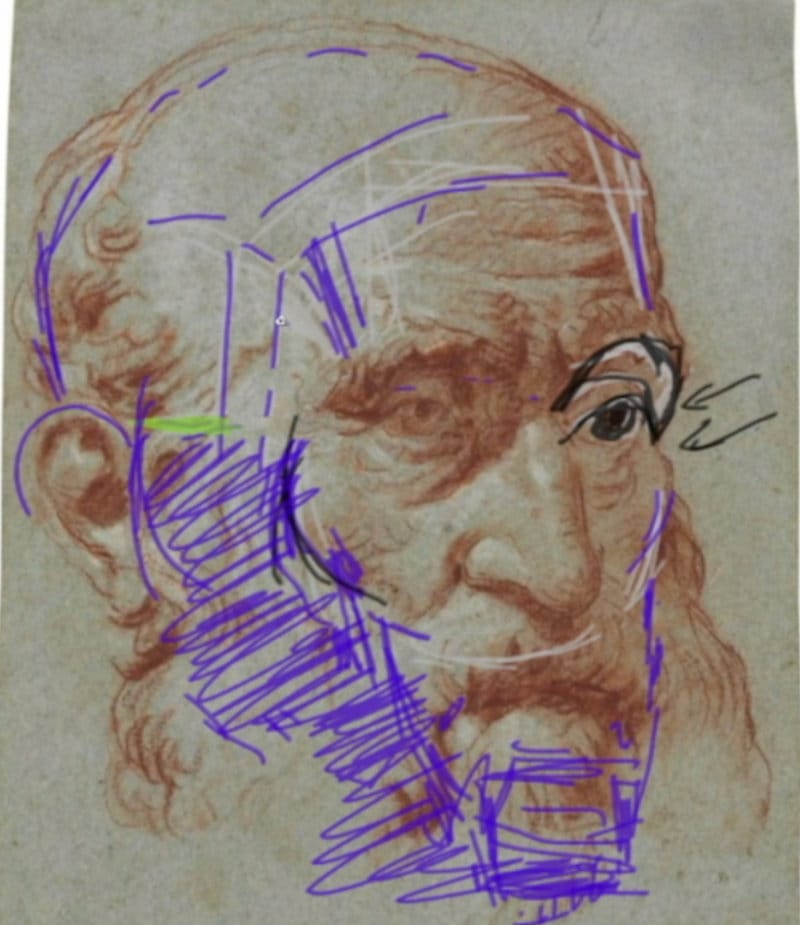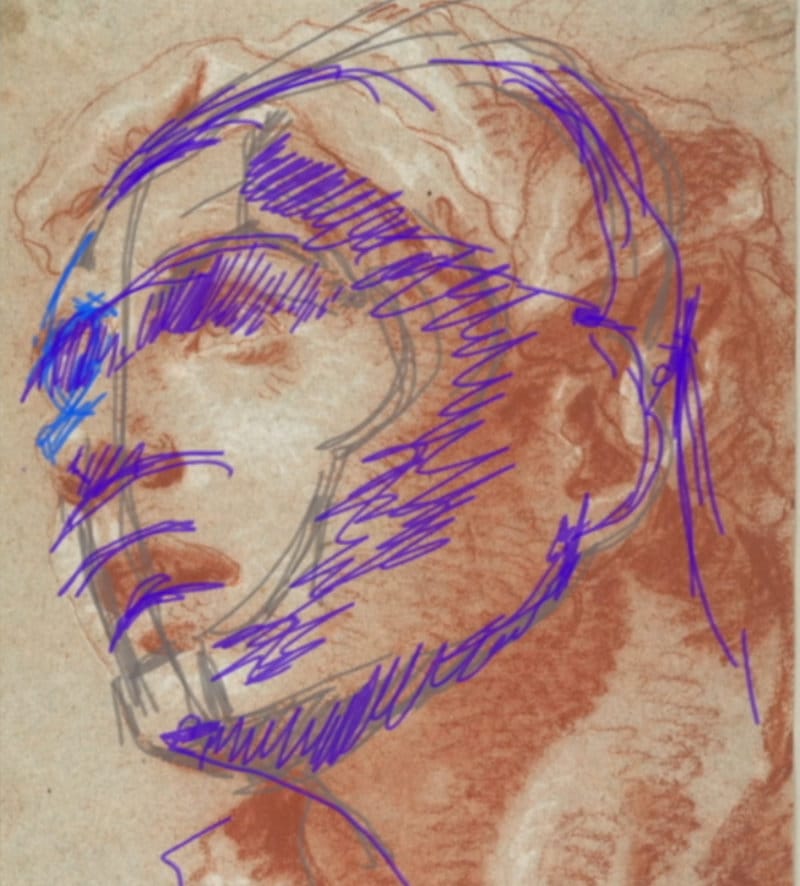Learning from the Masters: Holbein and Raphael Head Drawing Analysis
We've been learning skull construction, planes, and overlapping forms. But did the old masters actually use this stuff? Let's map construction lines over Holbein and Raphael drawings to find out. Spoiler: the structure is absolutely there - you just need to know where to look.

Let's see if the old masters actually used the head drawing stuff we've been learning, or if we've been wasting our time. Spoiler: They definitely used it.
Did you know? This lesson is part of a complete step-by-step head drawing course. If you haven't watched from the beginning I highly recommend you do so to get the most out of this lesson.
Watch video: hit play and learn how the Master's used many of the head drawing ideas shared in this series.
Why Analyze Master Drawings?
You could spend years practicing head construction in a vacuum. Or you could study how Holbein, Raphael, and other Renaissance masters structured their drawings.
Guess which one teaches you faster?
When you map construction lines over master drawings, you start seeing the invisible architecture underneath. The skull. The planes. The overlapping forms. It's all there - you just need to know what to look for.

Holbein Front View #1: The Fleshy Face
First up: a front-view Holbein with a fuller, more masculine face.
What jumps out immediately:
- Clear egg-shaped skull - wider at the top, narrower at the jaw
- Cheekbones hit their widest point right where the eyebrow peaks
- Subtle plane change at the temples (you can see the shadow)
- Side plane of the cheek overlaps the ear
- Neck flares out with those trapezius muscles showing
The skull reads clearly even though Holbein never drew a single construction line. He just knew where everything sat in space.

Holbein Front View #2: The Skeletal Face
Same artist, completely different face type.
This one's more austere - thinner, more skeletal features, more prominent ears.
Key differences:
- Narrower, more pointed chin
- Less flesh covering the bone structure
- Eyebrows arch more aggressively
- Cheekbones still widest part of face (rule holds up)
- Dimples sit outside the mouth corners, pushing toward the sides
Even with different face types, the underlying skull construction stays consistent. That's the point - learn the structure, then adapt it to any face.

Raphael Three-Quarter View: The Bearded Male
Now we shift to Raphael and get into angles.
What this drawing reveals:
- Eyebrow peaks show the plane change (top of head vs side of head)
- Cheekbones sweep underneath the eyes and back up to the ear
- Side plane clearly separated from front plane
- Skull curves back behind the ear
- Beard hides the jawline, but you can still map it
Notice those subtle hatch marks Raphael used? Those aren't random. They're mapping the form - showing where the face narrows, where planes change direction.
Bonus detail: Look how deep that eyeball sits in the socket. It's not bulging out like a cartoon. It's protected, set way back. Common mistake? Drawing eyeballs that stick out too far.

Raphael Looking Up: The Tilted Head
Last one - Raphael's three-quarter view tilted upward.
This is where perspective gets interesting.
What's happening:
- Center line curves with the perspective
- Forehead plane angles upward
- Cheekbones track in perspective
- That digastric plane under the chin becomes visible (those zigzag marks)
- Eyebrow arch still shows the plane change
- Everything curves to match the perspective
Even the lips and facial features follow perspective lines. Nothing's flat. Everything wraps around the form.
What You Should Take Away
These masters - Holbein and Raphael - weren't guessing. They understood skull structure, planes, overlapping forms, and perspective.
Your assignment: Find master drawings you admire and map them out. Don't copy them - analyze them. Draw construction lines over them (digitally or on printouts). See if the principles we've been learning show up.
They will.
Because good draftsmanship isn't magic. It's structure you can see once you know what to look for.
Course Navigation
- Previous: Box Construction Part 7
- Next: Box Construction Assignment Reel
- Course Hub: Complete Head Drawing Course
Continue Learning
If you enjoyed this hand drawing course, explore even more lessons on our Free Drawing Tutorials & Courses Hub — including the complete How to Draw – Beginner’s Course.
Want new tutorials delivered to your inbox? Subscribe here and get free lessons, tips, and inspiration sent directly to you.




